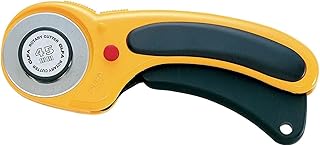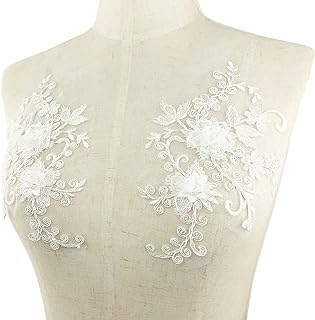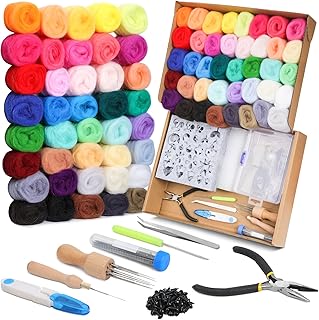5 important factors worth considering when looking for the best laying tool needlepoint
When it comes to needlepoint, choosing the right laying tool is important for improving the quality and precision of your stitching. As people who love needlework search for the best laying tool, there are a few important factors to think about. These include how comfortable the tool is to use for detailed projects, as well as how durable it is over time. Each of these elements adds to the overall qualities that make an ideal laying tool. In the world of needlepoint tools, people who pay close attention to detail explore a place where practicality and beauty come together to change the way we think about stitching.
See our guide to the best laying tool needlepoint.
Material (metal, wood, plastic)
Choosing the right material for your laying tool in needlepoint is important for a good stitching experience. Metal laying tools are durable and precise, perfect for detailed and smooth stitches. The weight of metal helps with stability and control, making sure each stitch is accurate. Wood laying tools give a traditional feel to your kit. The warmth and smoothness of wood make it comfortable to hold for a long time, allowing for easy stitching without making your hands tired. Plastic laying tools are lightweight and cheaper, but they may not be as durable or precise as metal or wood. They can still be a good choice for beginners or those who like a lighter tool. The material you choose for your laying tool should fit what you like and how you stitch, making your needlepoint experience better.
Size and weight
Choosing the right laying tool for your needlepoint projects is important. It’s best to think about how big and heavy the tool is.
A small and light tool is easy to use and move around, making it simple to stitch accurately.
On the other hand, a heavier tool can make your stitches more stable and give them depth. This can add texture and dimension to your needlework.
It’s important to find a tool that balances size and weight and fits your stitching style.
The ideal tool should feel like a natural part of your hand, making stitching a smooth and enjoyable experience that brings your creative ideas to life.
By finding the right tool size and weight that works well with your technique, you can improve the quality and intricacy of your needlepoint projects. This creates a nice blend of skill and comfort.
Shape (straight, curved, angled)
When it comes to choosing a laying tool for needlepoint, the shape is important for accuracy and comfort while stitching. Straight laying tools are a good option for beginners and experienced stitchers because they offer stability and are easy to use. Curved laying tools have a unique design that is comfortable for people who like a more natural hand position. They can help reduce wrist strain and make it easier to stitch around tight corners. Angled laying tools are great for reaching difficult angles and creating different textures in your stitches. They provide precision and control, making them a popular choice for advanced stitchers who want to add depth to their designs. Ultimately, the best laying tool shape depends on your personal preference and the needs of your project. Whether you choose a straight, curved, or angled laying tool, make sure it fits your stitching style and comfort level to improve the quality of your needlepoint work.
Comfort of grip
When choosing a laying tool for needlepoint, it’s important to consider the comfort of the grip. A good grip will help you work on your projects for longer periods without getting tired or feeling uncomfortable. It can also improve your stitching experience and allow you to focus on your art without being distracted.
Getting a laying tool with a comfortable grip is a smart choice for both your creativity and physical health. By thinking about how the tool feels in your hand, you can make your needlepoint sessions easier and more enjoyable. Remember, even small details like grip comfort can make a big difference in creating beautiful needlepoint pieces. So, make sure to choose a tool that feels good to hold and use.
Durability and quality of construction
When you’re looking to buy a laying tool for needlepoint, it’s important to prioritize durability and quality. A good laying tool can improve your stitching experience and last a long time, making it a great investment for anyone who loves needlework. Look for tools made from strong materials like hardwood or metal, as they are more likely to hold up well over time and with frequent use without getting damaged. A durable laying tool not only helps with your stitching projects, but also adds a nice touch of style to your needlework collection.
Choosing a laying tool with top-notch craftsmanship is key for achieving precise and polished results in your needlepoint projects. Look for tools that are carefully made with attention to detail, as this can make a big difference in the quality of your stitches and how your creations turn out overall. A well-made laying tool should feel comfortable in your hand and move smoothly through the canvas, so you can focus on your stitching without any issues. Investing in a high-quality laying tool shows that you take your craft seriously and sets the stage for a smooth and enjoyable stitching experience that will last a long time.
Conclusion
The art of needlepoint is brought to life with the help of a laying tool. This tool plays a key role in adding intricate details and creating texture in needlepoint projects. By guiding threads with ease, the laying tool allows artisans to craft stunning designs with precision and beauty. For those passionate about needlepoint, the laying tool symbolizes dedication and artistry, helping to weave together creativity into beautiful works of art. Want more info on cookie scoops, check the best cookie scoops.


